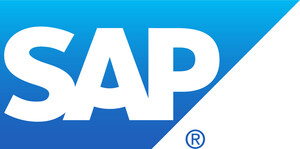WALLDORF, Germany, Sept. 23, 2014 /PRNewswire/ -- Now more than ever, customers are in the driver's seat, defining when, where and how they want to be engaged. To win their hearts and minds, companies must create highly relevant, personalized and consistent brand experiences across the entire customer lifecycle — from initial engagement to ongoing service and support. Today's marketing professionals must, in essence, market to an audience of one. According to new research from SAP SE (NYSE: SAP) and the CMO Council, Mastering Adaptive Customer Engagements, many organizations struggle to deliver this highly personalized and integrated engagement model. Companies recognize the importance of delivering the best possible customer experience, but they face a number of challenges in doing so.
Through interviews with more than 300 senior marketing executives at B2B and B2C organizations across North America, the report found that 73 percent of marketers view customer centricity as critical to the success of their business and role at the company. However, very few marketers feel their organizations are positioned to engage and support the personalized needs of today's empowered customer, pointing to "customer-centricity" gap in the following areas:
- Only 14 percent of marketers say customer centricity is ranked high within their organization; only 11 percent say that their customers would say customer centricity is ranked high within their organization.
- 66 percent of marketers believe that quick response times to customer requests or complaints is the most important attribute demonstrating customer centricity through the eyes of their customers.
"Customer centricity is an ever-moving target based on customer expectations, so it's always a journey," said Ingrid Lindberg, chief customer experience officer, Prime Therapeutics. "Although we are exceptionally responsive, we are still forced to evolve as the definition changes. Luckily, we are agile and able to adapt to those changes quickly."
It's Not Just About Technology: While it would be easy to blame the shortcomings in mastering more adaptive customer engagements on a lack of technology budget, in reality, technology isn't the root of the turmoil. In fact, when asked to identify the greatest challenges with executing a customer experience strategy, executives surveyed point to separate internal matters:
- 22 percent of marketers point to challenges with people; having the right talent and the right culture to reach success.
- 52 percent say that it is a combination the people, the processes and the platforms needed to properly develop, manage, measure and continue delivery of the customer experience.
Cross-Functional Partners are Critical: Marketing executives identify other core business functions, including customer service, sales and IT, as being the stewards of providing an optimized customer experience. Always-on access to products, account details, profile information and customer support is seen as a key component by 36 percent of respondents. This requires partnership across IT, customer service and marketing to execute properly.
Capitalize on the Customer Engagement Opportunity: Marketing leaders have an incredible opportunity to help their organizations adapt to this new wave of customer engagement. By implementing the core foundational principles of customer experience success, organizations can more rapidly advance strategies to stay ahead of customer needs and growing expectations.
Click here to learn more about SAP® solutions for customer engagement and the value they can deliver. To read a full copy of the report click here.
For more information, visit the SAP News Center. Follow SAP on Twitter at @sapnews.
Media Contacts:
Andrea Meyer, SAP, +1 (415) 370-7329, [email protected], PDT
Britt Gottlieb, PAN Communications, +1 (617) 502-4334, [email protected], EDT
Any statements contained in this document that are not historical facts are forward-looking statements as defined in the U.S. Private Securities Litigation Reform Act of 1995. Words such as "anticipate," "believe," "estimate," "expect," "forecast," "intend," "may," "plan," "project," "predict," "should" and "will" and similar expressions as they relate to SAP are intended to identify such forward-looking statements. SAP undertakes no obligation to publicly update or revise any forward-looking statements. All forward-looking statements are subject to various risks and uncertainties that could cause actual results to differ materially from expectations. The factors that could affect SAP's future financial results are discussed more fully in SAP's filings with the U.S. Securities and Exchange Commission ("SEC"), including SAP's most recent Annual Report on Form 20-F filed with the SEC. Readers are cautioned not to place undue reliance on these forward-looking statements, which speak only as of their dates.
Logo - http://photos.prnewswire.com/prnh/20110126/AQ34470LOGO
SOURCE SAP SE
WANT YOUR COMPANY'S NEWS FEATURED ON PRNEWSWIRE.COM?
Newsrooms &
Influencers
Digital Media
Outlets
Journalists
Opted In




Share this article